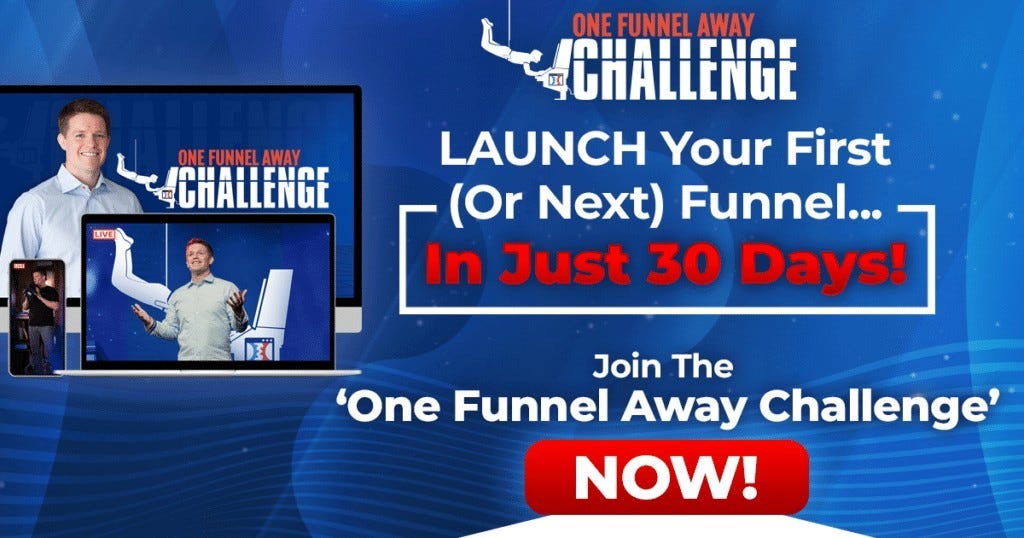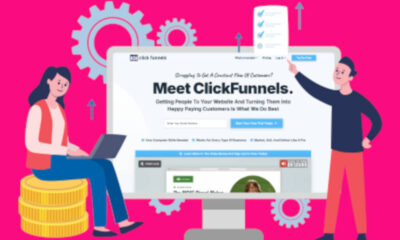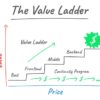Email Marketing
Marketing Strategies for Online Course: How to Stand Out and Succeed
In today’s digital age, creating an online course is just the beginning of an exciting journey. You have knowledge to share and ideas to spread, but how do you ensure that your course reaches the eager minds ready to learn? Marketing it effectively is the answer, and we’re here to guide you through this adventure. Whether you’re an entrepreneur, educator, or online learner, these strategies will illuminate your path.
Real Talk Does Selling an Online Course Even Make Sense at This Point?
Let’s get real for a moment. With the explosion of online courses, you might wonder if there’s still room for your offerings. The short answer? Absolutely. The demand for flexible, accessible learning has never been higher. However, standing out requires innovation and authenticity. Your unique perspective and expertise are your biggest assets, so lean into them. Remember, potential students are not only seeking information but also inspiration and transformation.
Consider the motivations behind your course. Are you addressing a niche need or a trending topic? The key is to align your course with the desires of your target audience. Conduct surveys and engage with your community to understand their challenges. By addressing specific pain points, you can position your course as the solution they’ve been seeking. In this crowded marketplace, your authenticity can be your superpower. Share your personal experiences and insights, making your course not just educational but also relatable.
Ultimately, the value you bring to the table is what sets you apart. Your passion for the subject matter and your commitment to helping others will resonate deeply with your audience. The market may be crowded, but there’s always room for genuine, quality content that truly makes a difference in people’s lives.
The Single Most Important Factor that will Determine Your Sales in the Long Run
While many elements contribute to the success of an online course, one stands above the rest—trust. Building trust with your audience is paramount. When people believe in your expertise and intentions, they are more likely to enroll in your course and recommend it to others. Trust is earned through consistent, authentic interactions and delivering on promises.
Start by establishing credibility. Share your background, qualifications, and any relevant experience that positions you as an authority in your field. Testimonials and success stories from previous students can further build trust. Make sure to showcase real results and the impact your course has had on learners.
Communication is another crucial aspect of building trust. Be transparent about what your course offers and set clear expectations. Engage with your audience through newsletters, social media, and webinars. Respond promptly to questions and feedback, demonstrating that you value their input. This ongoing interaction fosters a sense of community and belonging.
Remember, trust is not built overnight. It requires dedication and authenticity. By focusing on delivering exceptional value and fostering meaningful connections, you’ll lay the foundation for long-term success and a loyal following.
The Top 5 Sales Funnels for Selling Online Courses
Navigating the world of sales funnels can seem daunting, but fear not—these powerful tools are designed to guide potential learners on a clear path from discovery to enrollment. Let’s break down the top five sales funnels that can revolutionize your online course sales.
What is a Sales Funnel?
A sales funnel is a strategic framework that outlines the stages a potential customer goes through before making a purchase. By guiding prospects through these stages, you can effectively nurture leads, build trust, and ultimately convert them into paying students. Each stage of the funnel serves a distinct purpose, from generating awareness to encouraging action.
Successful sales funnels focus on providing value at every step. Instead of pushing for a sale right away, they prioritize building relationships and addressing the needs of the audience. By understanding the buyer’s journey and tailoring your approach, you can increase the likelihood of conversions and foster long-term loyalty.
With the right sales funnel strategy, you can turn casual visitors into dedicated learners. Let’s explore five popular sales funnels that have helped educators and entrepreneurs achieve remarkable results.
Sales Funnel #1 The Product Launch Funnel
The product launch funnel is ideal for creating excitement and anticipation around your course release. By strategically building hype, you can generate buzz and attract eager learners.
This funnel typically involves a series of well-timed emails and social media posts leading up to the launch date. Each piece of content is designed to highlight the benefits and unique features of your course. By offering sneak peeks, exclusive content, and limited-time promotions, you can create a sense of urgency and encourage early enrollment.
One effective strategy is to host a live webinar or Q&A session before the launch. This allows potential students to interact with you directly, ask questions, and gain a deeper understanding of the course. By showcasing your expertise and passion, you can build trust and excitement, increasing the likelihood of conversions.
Sales Funnel #2 The Squeeze Page Funnel
The squeeze page funnel focuses on capturing leads by offering valuable resources in exchange for contact information. It’s a powerful way to grow your email list and nurture relationships with potential students.
The key to a successful squeeze page is a compelling offer. This could be a free e-book, checklist, or mini-course related to your main course topic. By providing valuable content, you can demonstrate your expertise and build trust with your audience.
Once you’ve captured leads, nurture them through a series of follow-up emails. Provide additional value, such as case studies, testimonials, and behind-the-scenes insights into your course. This ongoing communication keeps your course top of mind and encourages potential students to take the next step.
Sales Funnel #3 The Reverse Squeeze Page Funnel
In contrast to the traditional squeeze page, the reverse squeeze page offers immediate value before asking for contact information. This approach builds trust by providing a glimpse of the benefits your course offers.
The reverse squeeze page typically includes a video or downloadable resource that addresses a common pain point. By delivering valuable insights upfront, you can demonstrate your expertise and showcase the value of your course.
After engaging with the content, visitors are more likely to provide their contact information in exchange for further resources. This approach creates a positive first impression and establishes you as a trusted authority in your field.
Sales Funnel #4 The Webinar Funnel
Webinars are a fantastic way to connect with your audience, showcase your expertise, and provide in-depth insights into your course. The webinar funnel leverages the power of live interaction to drive conversions.
Start by promoting your webinar through email, social media, and your website. Highlight the unique value participants will gain and create a sense of urgency by emphasizing limited availability.
During the webinar, focus on delivering actionable content and addressing common challenges your audience faces. Offer a special promotion or bonus for attendees who enroll in your course during the event. By creating a sense of exclusivity, you can encourage immediate action.
Sales Funnel #5 Squeeze Page Funnel + Webinar Funnel
Combining the squeeze page and webinar funnel creates a powerful synergy that maximizes lead generation and engagement. This approach allows you to capture leads and nurture them through valuable content before driving conversions through a live webinar.
Begin by offering a free resource on your squeeze page to capture leads. Once you’ve collected contact information, invite them to register for an exclusive webinar. The webinar serves as an opportunity to provide in-depth insights and address any doubts or objections your audience may have.
This combined approach ensures that your audience receives consistent value, building trust and motivation to enroll in your course.
Five Marketing Strategies that Can Help You Get More Traffic
Attracting traffic to your online course is essential for increasing enrollment and driving sales. Here are five effective marketing strategies to boost your course’s visibility and reach.
Marketing Strategy #1 Affiliate Marketing
Affiliate marketing involves partnering with individuals or businesses that promote your course in exchange for a commission on sales. It’s a powerful way to leverage the influence of others and expand your reach.
Start by identifying potential affiliates who align with your course’s niche. Reach out to them with a compelling offer and clear guidelines on how they can promote your course. Provide them with marketing materials, such as banners, email templates, and social media posts, to make the process seamless.
By building strong relationships with affiliates, you can tap into their existing audience and benefit from their credibility. This strategy not only drives traffic but also establishes your course as a trusted and reputable option.
Marketing Strategy #2 Social Media Marketing
Social media is a dynamic platform for connecting with your audience, sharing valuable content, and building a community around your course. By leveraging platforms like Facebook, Instagram, LinkedIn, and Twitter, you can reach potential students where they spend their time.
Start by creating engaging and informative posts that highlight the benefits of your course. Use a mix of visuals, videos, and written content to keep your audience engaged. Encourage interaction by asking questions, running polls, and responding to comments.
Consider running targeted ads to reach a wider audience. Use audience targeting features to ensure your ads are seen by individuals who are most likely to be interested in your course. Social media is a dynamic platform for connecting with your audience, sharing valuable content, and building a community around your course. By leveraging platforms like Facebook, Instagram, LinkedIn, and Twitter, you can reach potential students where they spend their time.
Marketing Strategy #3 YouTube Marketing
YouTube is a powerful platform for sharing video content and reaching a global audience. By creating informative and engaging videos, you can showcase your expertise, connect with potential students, and drive traffic to your course.
Start by creating a YouTube channel dedicated to your course topic. Publish videos that provide valuable insights, tips, and tutorials. Consider creating a series of videos that address common questions or challenges your audience faces.
Optimize your videos for search by using keywords in titles, descriptions, and tags. Include a call-to-action in each video, directing viewers to your course landing page for more information.
Marketing Strategy #4 Search Engine Optimization (SEO)
SEO is a fundamental strategy for increasing the visibility of your course and attracting organic traffic. By optimizing your website and content for search engines, you can ensure that potential students find your course when searching for related topics.
Start by conducting keyword research to identify the terms and phrases your audience uses when searching for content related to your course. Use these keywords strategically in your website copy, blog posts, and meta tags.
Create high-quality, valuable content that addresses the needs and interests of your audience. This could include blog posts, articles, and guides that provide in-depth insights into your course topic. Ensure your content is well-structured, easily readable, and optimized for both search engines and human readers.
Marketing Strategy #5 Social Media Advertising
Social media advertising is a powerful tool for reaching a highly targeted audience and driving traffic to your course. By running paid ads on platforms like Facebook, Instagram, and LinkedIn, you can expand your reach and increase enrollment.
Start by defining your advertising goals and budget. Choose the platforms that align best with your audience and course topic. Create compelling ad creatives, including visuals and copy, that highlight the benefits of your course.
Use audience targeting features to ensure your ads are seen by individuals who are most likely to be interested in your course. Monitor and optimize your ad campaigns regularly to ensure maximum return on investment.
Use Marketing to Promote Your Lead Magnet!
A lead magnet is a valuable resource you offer in exchange for contact information. It’s a powerful tool for growing your email list and nurturing relationships with potential students.
Start by creating a lead magnet that aligns with your course topic. This could be an e-book, checklist, template, or mini-course that provides value and addresses a specific pain point.
Promote your lead magnet through your website, social media, and email campaigns. Use compelling calls-to-action to encourage individuals to download the lead magnet and join your email list.
Once individuals have opted in, nurture them through a series of follow-up emails. Provide additional value, insights, and exclusive offers to keep them engaged and motivated to enroll in your course.
Want to Learn How to Build Sales Funnels That CONVERT?
If you’re ready to take your course sales to the next level, learning how to build high-converting sales funnels is a valuable skill. By strategically guiding potential students through the buyer’s journey, you can increase conversions and drive long-term success.
Consider enrolling in a course or program that teaches the principles of sales funnel design and implementation. Look for resources that provide step-by-step guidance, practical examples, and actionable strategies.
By mastering the art of sales funnels, you’ll gain a competitive edge and position your course as a sought-after solution in your niche.
Conclusion
Marketing your online course effectively is a dynamic and rewarding process. By implementing these strategies and focusing on building trust and delivering value, you can attract enthusiastic learners and drive course sales.
Remember, success doesn’t happen overnight. It requires dedication, creativity, and a willingness to adapt to the changing landscape. Stay connected with your audience, continuously refine your approach, and celebrate every milestone along the way.
Ready to transform your course sales? Start by implementing these strategies and watch your course reach new heights. Your knowledge has the power to inspire and transform lives—share it with the world.
>>>Join The One Funnel Away Challenge<<<






























